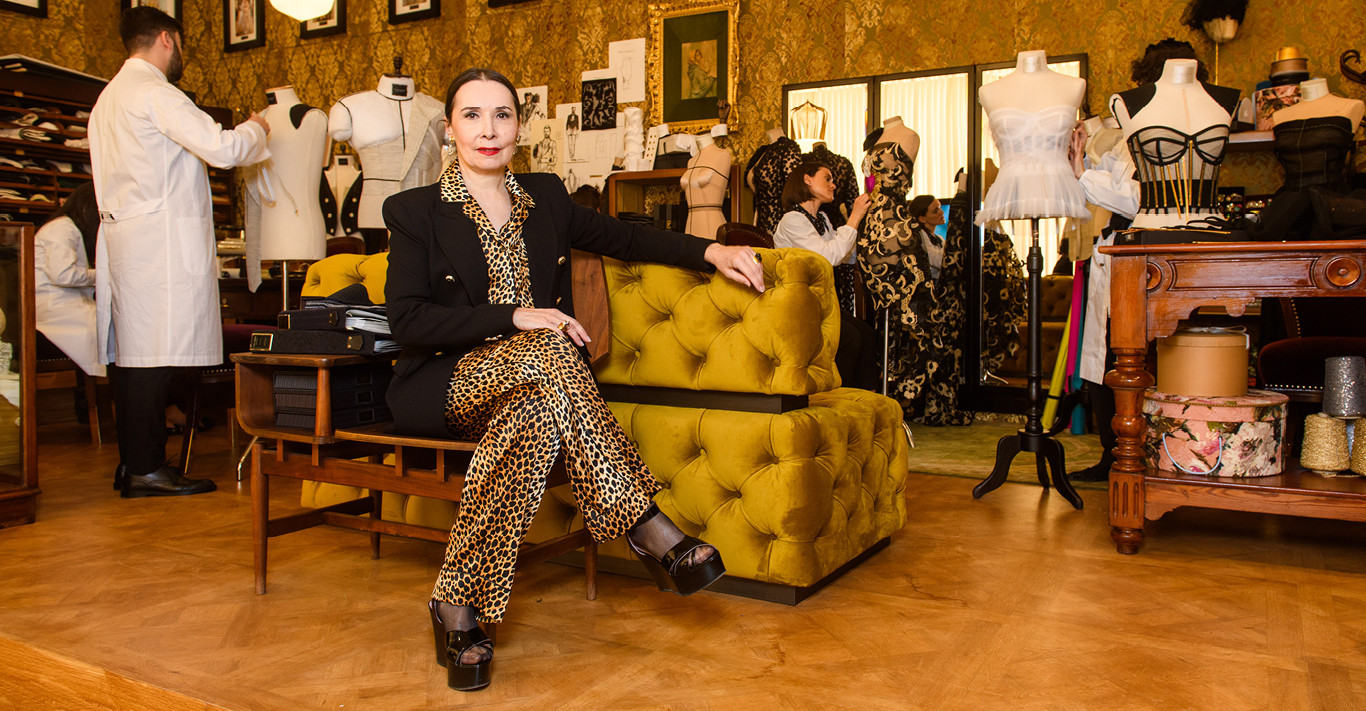WORDS
Peter Howarth
The new Dolce & Gabbana exhibition, which recently opened at the historic and highly ornate Palazzo Reale in Milan, is an assault on the senses. Called From the Heart to the Hands: Dolce & Gabbana (Dal Cuore alle Mani: Dolce & Gabbana), it is made up of 10 rooms of immersive installations themed around the material and cultural inspirations of the design duo; from the romantic 1963 Luchino Visconti film Il Gattopardo (The Leopard), based on the novel by Giuseppe Tomasi di Lampedusa and set in Sicily, to the world of Italian opera – the works of Verde and Puccini in particular, to the masterly Baroque stucco work of Giacomo Serpotta and the atmospheric Valley of the Temples in Agrigento.
Rooms are decorated with 24-carat gold-leaf glass mosaic, made in Venice by Orsoni using an 1888 furnace, the last of its kind; brightly patterned hand-painted Sicilian tiles in a space whose centrepiece is a painted wooden carretto siciliano (Sicilian cart) owned by the designers and decorated with folk imagery; or chandeliers by Barovier & Toso, a company which dates back to 1295, and multiple mirrors by Barbini, a family business whose Murano mirror-making can be traced back to the 17th century (these in a room dedicated to Venetian glass working).
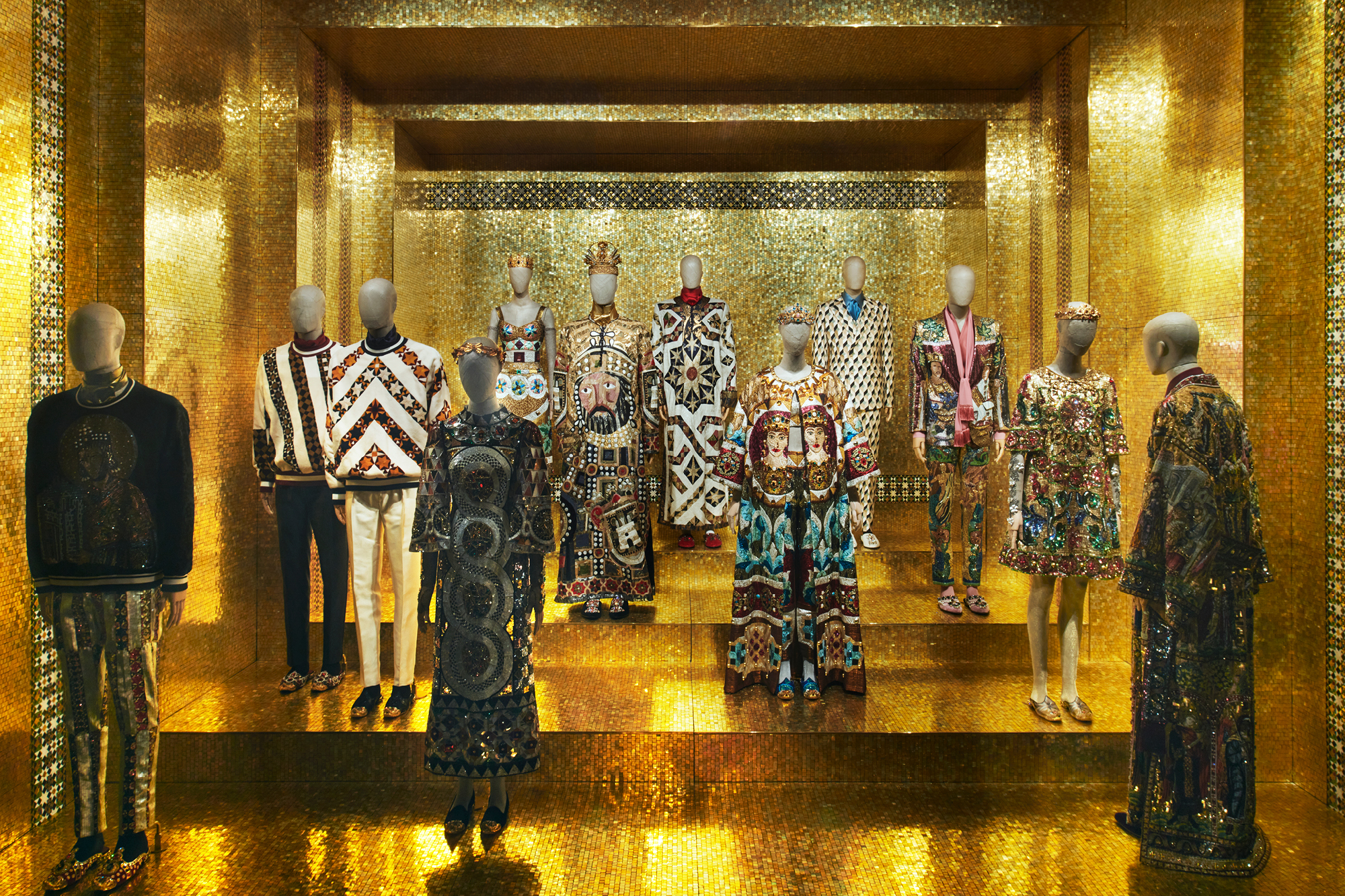
And of course, everywhere are Dolce & Gabbana’s distinctive clothes and jewellery, pieces drawn exclusively from the couture collections: Alta Moda, Alta Sartoria and Alta Gioielleria – menswear, womenswear and jewellery respectively. These garments are displayed in thematic tableaux that reference particular locations that, in many cases, have hosted couture shows by the label. For example, La Scala in Milan, the Temple of Concordia in Agrigento, the Arsenale in Venice and the Sala delle Feste of the Palazzo Gangi in Palermo, where Il Gattopardo’s famous ballroom scene was filmed.
‘Our goal is to stimulate the pursuit of beauty, because this ideal makes you dream, makes you grow, takes you to a higher feeling,’ say the designers. They describe the concept as a type of Grand Tour through Italy – ‘It traces the places in our heart.’ And an attempt to bring to life the importance of craftsmanship in their work: the fatto a mano, the handmade. Hence the exhibition’s title. ‘Fashion, like any other art form, is a journey from the heart, from which ideas are born, to the hands, the tools through which they take form,’ they say.
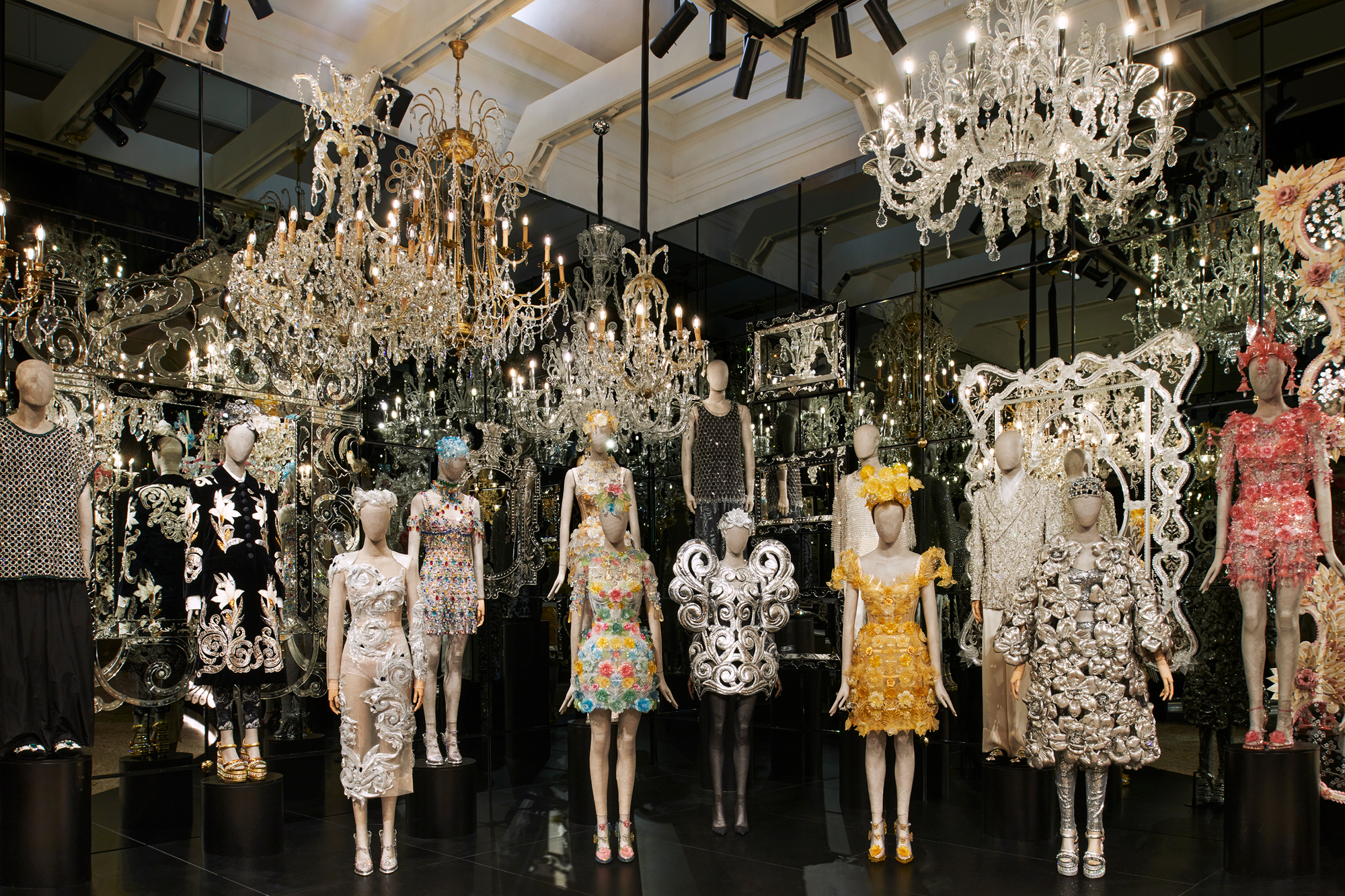
Milan’s mayor, Giuseppe Sala, explains: ‘The selected pieces illustrate the many diverse aspects of Italian culture that inspire their work, which is always characterised by a highly original blending of innovation and tradition: art and fashion first of all, but also less obvious aspects such as music, architecture, opera and local customs.’
Meanwhile, Dolce & Gabbana’s MD, Fedele Usai, tells of a conversation he once had with a non-Italian who stated, ‘Italy is not a country. It is an idea from which we all draw inspiration.’
This idea is on display at Palazzo Royale in all its rich glory. The curator of the exhibition, professor and expert in art and fashion Florence Müller, explains how the foundations of the show stem from the histories of the two men behind the label: ‘Building on deep family traditions, Sicilian for Domenico Dolce and Milanese for Stefano Gabbana, the designers envision collections rich in artistic and cultural references drawn from painting, architecture, sculpture, interior decoration or theatre arts.’
For their part, the designers explain the modus operandi behind their couture: ‘Our Alta Moda collections always interact with the spirit of the places where we present them. Every year, we personally meet the masters of art based in the cities that host our events, we imbue ourselves in the atmosphere of their laboratories and we involve them in the creative process. Only by going there you can discover things you have never seen before: for example, in 2020, we collaborated with 40 workshops in Florence: glassmakers, cabinetmakers, silversmiths, printers… It was a truly enriching exchange of ideas.’
And this exchange produces exciting and contemporary results, says curator Müller: ‘Under their [Domenico Dolce and Stefano Gabbana’s] guidance, artist-artisans take their trades to a new level, envisioning tomorrow’s innovations based on time-honoured know-how.’
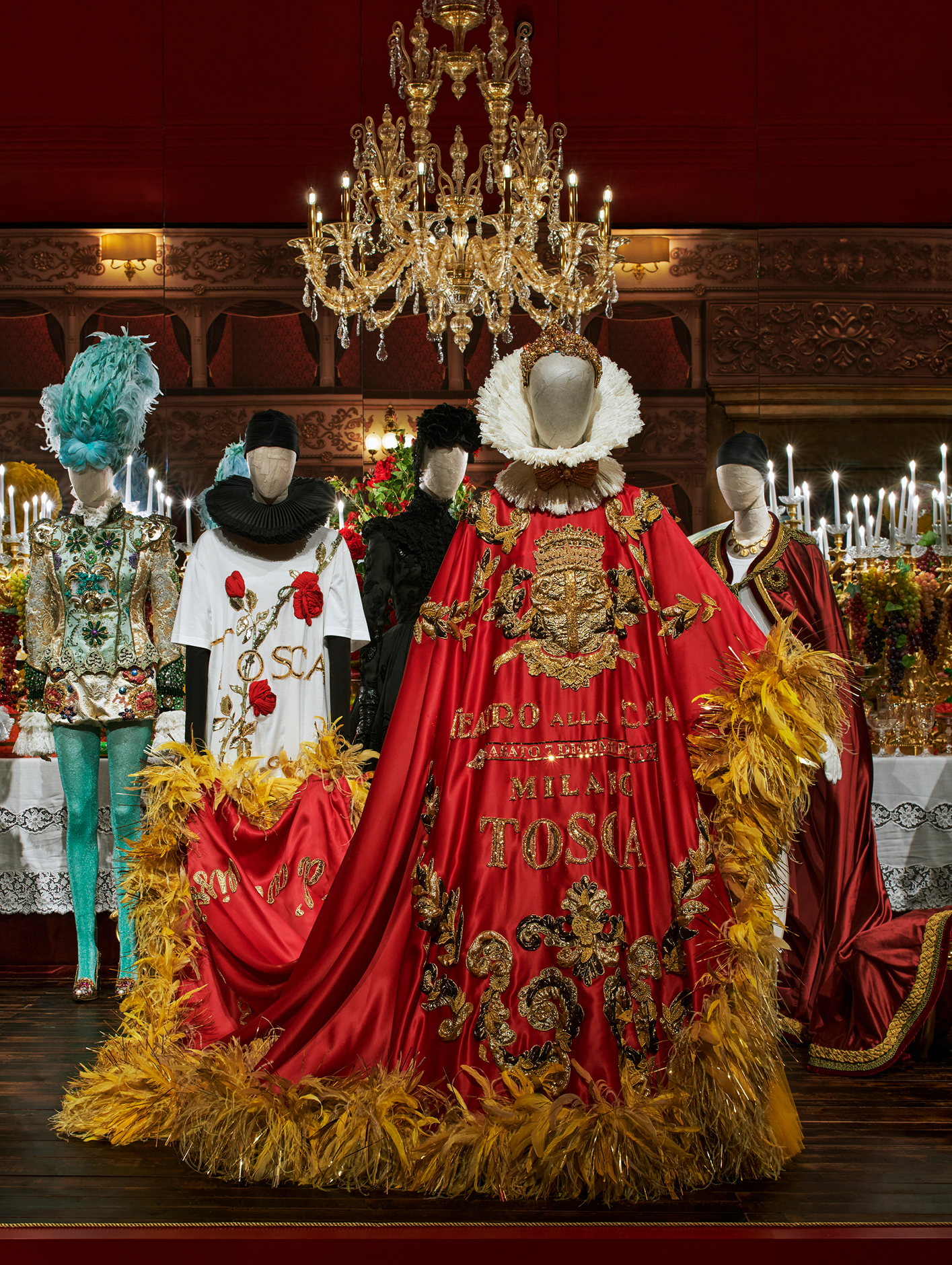
It is the dedication to craft and authenticity, and the passion for Italian culture that is really on show here. Whether you’re looking at a corset in silk jacquard teamed with a feather-embroidered, double-organza skirt with tulle underskirt, or a cloak with swakara collar, gold-trimmed frogging, and Lurex and cotton needlepoint embroidery creating a version of Basket of Fruit by Caravaggio, what you are really seeing is a curated story of Italy.
According to Florence Müller, it has only been possible for it to be written in this way because Dolce & Gabbana is something of a rare beast these days: ‘Domenico Dolce and Stefano Gabbana have succeeded in realising this dream because they are among the rare designers who are both the founders and owners of their fashion house and thus free to do whatever they like. And one thing they love is to pay tribute to the passion of those who create beauty through the intelligence of their hands.’
At the opening night of the exhibition many of Dolce & Gabbana’s celebrity friends are out in force, from Naomi Campbell to Cher, Demi Moore to Isabella Rossellini, Helen Mirren, Eva Herzigová and Lily James. David Gandy is there, forever associated with the brand’s Light Blue fragrance ads he modelled for. Another familiar face is that of The White Lotus and The Gentlemen’s Theo James. He confides that, until he was invited to one of the firm’s Alta Sartoria shows, he was unaware that it created this sort of one-off artistry. ‘It’s really incredible – not so much clothing as art.’ He says he appreciates and admires the skill that it represents, but also admits he personally goes for something simpler: ‘I’ve always loved the slim, black-and-white look of Dolce & Gabbana, it’s what I gravitate towards, like tonight.’
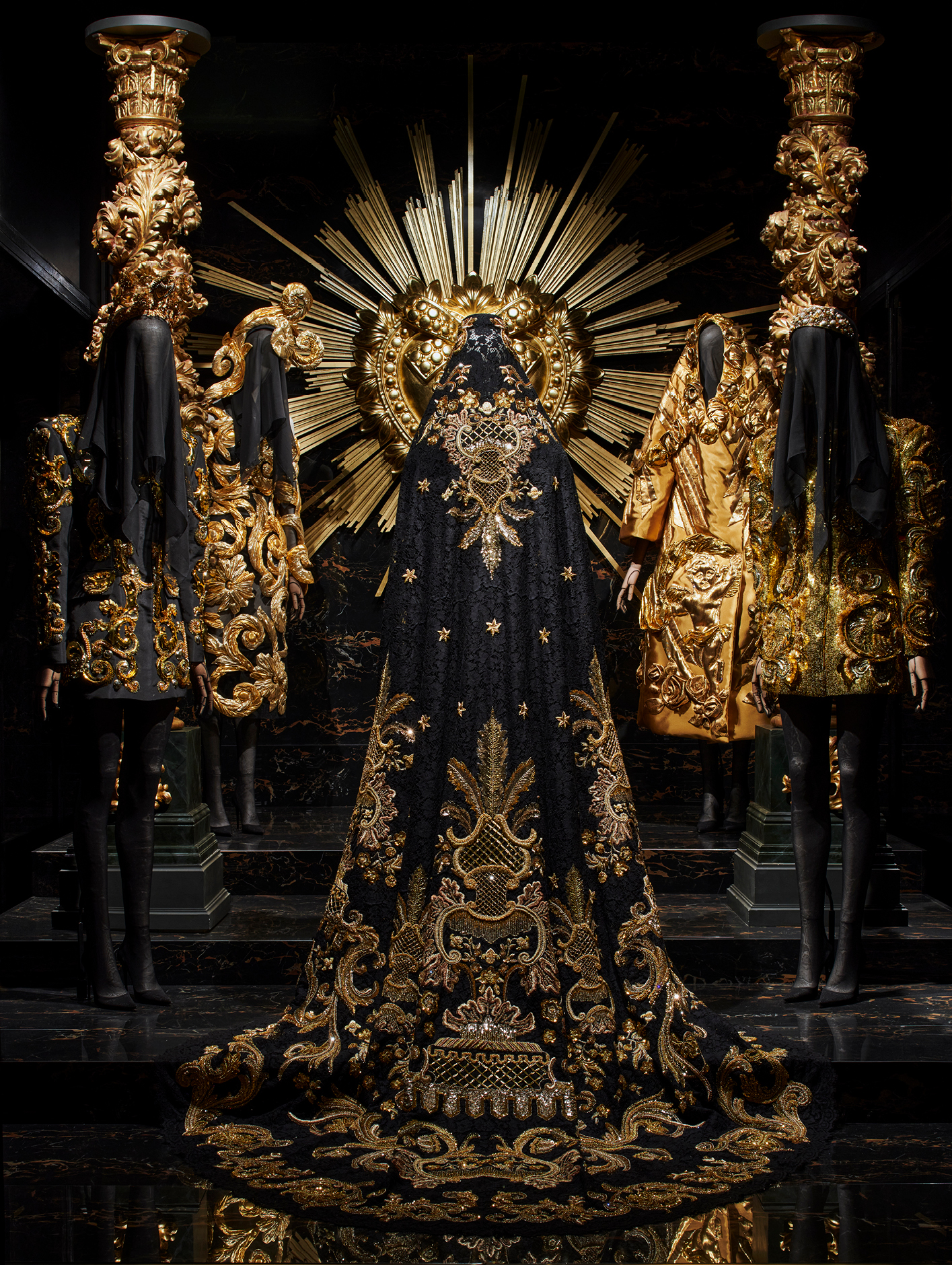
Tim Marlow, director of the Design Museum in London and a man who is no stranger to staging exhibitions, is impressed by the ambition of what he sees. ‘The Italians are so at ease with their culture,’ he says. ‘And though this is undoubtedly a love letter to Milan, it shows how rich and wide-ranging Italian culture is and the designers’ influences are – from Taormina to Portofino, from Palermo to Como, from Florence to Puglia. And from Greek and Roman to the Renaissance, from the religious to the secular, from folk painting to opera. That’s a wide sweep!’
Speaking of opera, the last big room is decked out with red velvet curtains and even a small box office. Here, where outfits reference the designers’ favourite composers and works, we find British opera singer Barnaby Rea looking at the Madama Butterfly-inspired pieces.
What does he think? ‘I’m so pleased this sort of dedication to craft still exists,’ replies Rea. ‘I’m currently in a production of Richard Wagner’s Die Meistersinger von Nürnberg in Madrid and the lead, Hans Sachs, is the longest role in the core repertoire of opera. Gerald Finley, who’s playing Sachs, originally took two years learning, coaching and preparing for the role before the first time he performed it. That’s commitment. It’s our equivalent of couture. In a time rife with fast fashion and instant gratification through short-form media, it’s important to highlight that some art takes time and dedication to bring it to life.’
From the Heart to the Hands: Dolce & Gabbana (Dal Cuore alle Mani: Dolce & Gabbana) is at the Palazzo Reale, Milan until 31 July 2024, after which it will tour the world; dolcegabbana.com


